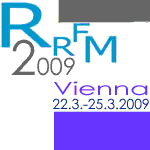 |
 |
|
|
04.11.2008 |
|
No. 87 / News |
Work Resumes On Completion of Slovakia’s Mochovce-3 and -4
4 Nov (NucNet): Work on the completion of units 3 and 4 of the Mochovce nuclear power plant in western Slovakia resumed yesterday.
Slovak prime minister Robert Fico attended a ceremony to mark the start of completion of the two Soviet-type VVER-440 pressurised water reactors.
The Slovak Nuclear Society said utility Slovenske Elektrarne will invest about 1.8 billion euro (2.3 billion US dollars) in the completion of the units.
The new units are intended to compensate for the loss of electricity production resulting from the closure of two units at the Bohunice nuclear power plant (also known as Bohunice V1). Unit 1 at Bohunice was shut down permanently in 2007 in line with commitments made by Slovakia when it joined the EU in May 2004. Unit 2 is scheduled for closure next month.
Construction of Mochovce-3 and -4 began in 1987, but was halted five years later. Technology at the units was 30 percent complete and civil structures were 70 percent complete.
According to the Slovak Nuclear Society, Slovenske Elektrarne is trying to keep to the planned deadline for completion of Mochovce-3 in 2012 and Bohunice-4 in 2013. All construction permits needed for the resumption of work have been granted.
Enel of Italy, the majority owner of Slovenske Elektrarne, also plans to uprate Mochovce’s two existing operational units.
Enel chief executive officer Fluvio Conti today reiterated Enel’s intention to push for another new reactor unit at Bohunice.
31.10.2008 |
|
No. 42 / World Nuclear Review |
Japan Aims For 67% Nuclear Share By 2100
31 Oct (NucNet): The share of nuclear in electricity generation in Japan by 2100 is expected to be 67 percent and come from both fission and fusion reactor units.
In a supply-and-demand study called ‘2100 Nuclear Vision: Proposal Toward a Low-Carbon Society’, the Japan Atomic Energy Agency (JAEA) says the aim by 2100 is to reduce CO2 emissions by about 90 percent from current levels.
The study includes four major proposals:
-
The use of renewable energy and nuclear energy must be increased.
-
Nuclear energy will be used for power generation and also as a heat source in the production of hydrogen.
-
Final energy consumption should be reduced to about 60 percent of current levels by 2100. The approximate component shares of each type of energy will be 60 percent for electricity – an increase of 25 percent from today’s level – 30 percent for fossil fuels (now 75 percent) and 10 percent for hydrogen.
-
The approximate component shares for each type of primary energy will be 60 percent for nuclear (now 10 percent), 30 percent for fossil fuels (now 85 percent) and 10 percent for renewable energies (now 5 percent).
The JAEA said the total amount of generated electricity in 2100 is expected to reach around 1,700 billion kilowatt-hours, with nuclear accounting for about 67 percent, of which 18 percent will come from light water reactors (LWRs), 35 percent from fast breeder reactors (FBRs), and 14 percent from fusion reactors.
Installed capacity is expected to be about 370,000 megawatts (MW), with nuclear making up about 40 percent, of which 10 percent will come from LWRs, 21 percent from FBRs, and 9 percent from fusion reactors.
By 2100, 120 high-temperature gas-cooled reactors will be in use in the production of hydrogen, with a thermal capacity of 72,000 MW.
Today, Japan has 55 reactor units in commercial operation and two, Tomari-3 and Shimani-3, listed by the International Atomic Energy Agency as under construction. All seven units at the Kashiwazaki Kariwa nuclear power plant remain offline following a strong earthquake in July 2007. The nuclear share in electricity generation was about 28 percent in 2007.
21.10.2008 |
|
No. 81 / News |
IAEA Chief Renews Call For Global Energy Body
21 Oct (NucNet): The proposed creation of an “all-embracing international energy organisation” has been raised during a meeting of finance ministers of the group of Commonwealth countries by the head of the International Atomic Energy Agency (IAEA).
IAEA director-general Mohamed ElBaradei reiterated a call he made earlier this year for a new global energy body in an article for a publication made available during the ministers’ annual meeting held in St Lucia from 6 to 8 October 2008*.
“A number of institutions focus on energy, but none with a mandate that is global and comprehensive and that encompasses all energy forms,” Mr ElBaradei said.
“A global energy organisation would complement, not replace, existing bodies. It would bring an essential intergovernmental perspective to bear on issues which cannot be left to market forces alone, such as the development of new energy technology, the role of nuclear power and renewables, and innovative solutions for reducing pollution and greenhouse gas emissions,” he added.
Such an institution could also provide “authoritative comparative assessments at global, regional and national levels” such as on the long-term impacts of nuclear waste.
Mr ElBaradei said: “Efforts in the 1970s to establish a global energy organisation were unsuccessful. The world has changed dramatically since then and the need for joint action to develop long-term solutions to the current energy crisis is now undeniable.
“It is difficult to see how this can be done without an expert multinational body, underpinned perhaps by a global energy convention, with the authority to develop policies and practices to benefit rich and poor countries alike, equitably and fairly. We need to act before crisis turns into catastrophe.”
During their three-day meeting, Commonwealth finance ministers discussed the impact of food and fuel prices on their respective countries and, in a statement issued at the end of their meeting, said they noted the need to support the agricultural sector to increase food production and to explore new sources of energy supply.
* The Commonwealth is an association of 53 independent states whose head is Britain’s Queen Elizabeth. Mr ElBaradei’s article – ‘Addressing the global energy crisis’ – appears in the ‘Commonwealth Finance Ministers Reference Report 2008’. The full report can be purchased from the Commonwealth (publications.thecommonwealth.org). Mr ElBaradei’s article is available on the IAEA’s web site (www.iaea.org).
| |



